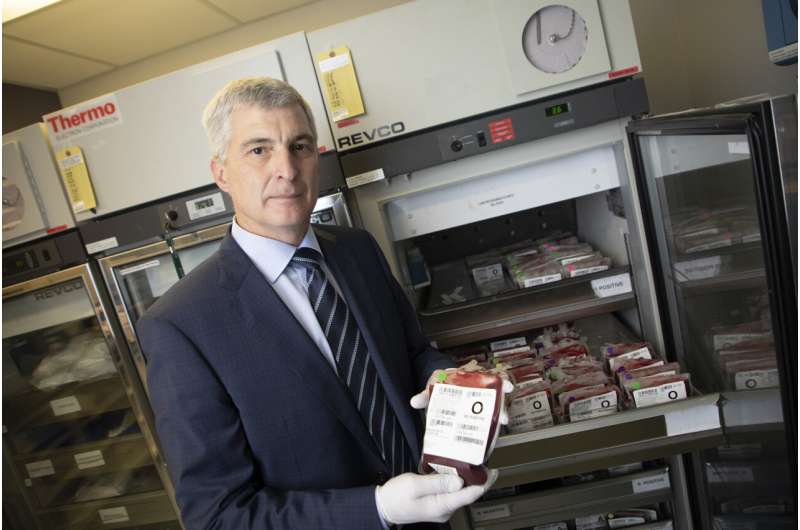
A large clinical trial of more than 8,700 patients published in the New England Journal of Medicine concluded that the sex of a donor has no effect on the survival of recipients of red blood cell transfusions.
“Some observational studies had suggested female donor blood might be linked with a higher risk of death among recipients compared to male donor blood, but our clinical trial found that isn’t the case,” said co-lead author Dr. Dean Fergusson, a senior scientist at The Ottawa Hospital, Director of the hospital’s Clinical Epidemiology Program and professor at the University of Ottawa.
The possible impact of the sex of a blood donor on recipient survival has been an unanswered question in transfusion medicine since 2015, when the American National Heart, Lung and Blood Institute identified it as a research priority. Some evidence suggested that sex-related differences such as hormone levels in male and female blood might affect recipient survival, but the results of observational studies have been conflicting.
“To answer this question definitively, we needed a large, randomized clinical trial, but those studies are incredibly expensive,” said Dr. Michaël Chassé, co-lead author of the study and intensivist at Centre hospitalier de l’Université de Montréal and associate professor at Université de Montréal. “By embedding this trial in real-world practice and using practical methods, we answered this question for a fraction of what a trial would normally cost.”
The research team estimates that using typical trial methods, this trial would have cost $9 million, but with their innovative approach, it only cost $300,000. The approach involved enrolling every adult patient at The Ottawa Hospital who might need a transfusion, randomizing them to receive male or female blood, and then collecting data from existing hospital databases and provincial registries.
As male and female blood were considered equivalent treatments, patients did not need to provide written consent to join the trial, but were given the option to opt out after the first transfusion. With this pragmatic approach, the team was able to enroll 8,719 participants into their double-blind, randomized trial in just over two years.
The study did not include patients without an Ontario Health Insurance Plan number, those who were massively bleeding and needed blood right away, or those with a complex antibody profile that made blood unit matching difficult.
Study participants were randomly assigned to receive either male or female donor blood at all visits to The Ottawa Hospital during the study period. A total of 80% of patients received their first transfusion while they were inpatients, and 42% of those received it during surgery.
Patient characteristics, laboratory and clinical data, and blood bank data were obtained from The Ottawa Hospital Data Warehouse. Blood donor data from Canadian Blood Services was linked with hospital data and health administrative data at ICES.
The study found no statistically significant differences in overall survival between recipients of male donor blood and recipients of female donor blood.
“Blood is the most common life-saving treatment given in hospital,” said Dr. Jason Acker, senior scientist at Canadian Blood Services. “As a blood provider, we were happy to help answer this very important question in transfusion medicine. We hope the findings encourage all eligible donors to continue to donate.”
More information:
The effect of donor sex on recipient mortality in transfusion, New England Journal of Medicine (2023). DOI: 10.1056/NEJMoa2211523
Journal information:
New England Journal of Medicine
Source: Read Full Article
